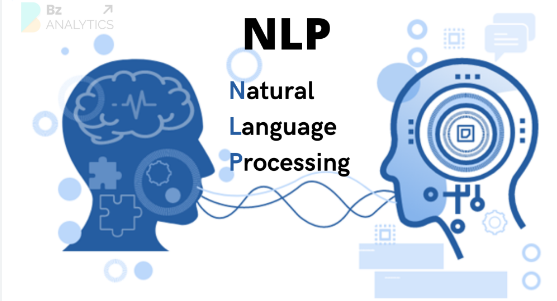
Natural Language Processing (NLP) is a subfield of artificial intelligence that deals with the interaction between computers and human languages. It involves the development of algorithms and computational models that enable machines to understand, interpret, and generate human language. NLP has become increasingly important in the modern world, as more and more data is generated in natural language format.
NLP has numerous applications in today’s world, ranging from simple tasks such as spam filtering to more complex ones such as language translation and sentiment analysis. One of the most common applications of NLP is in the field of chatbots, which are computer programs designed to simulate conversation with human users. Chatbots are used in a variety of settings, including customer service, e-commerce, and healthcare. They use NLP algorithms to understand user queries and respond with appropriate answers.
Another important application of NLP is in the field of sentiment analysis, which involves the use of NLP algorithms to analyze the emotions expressed in text data. This is particularly useful in social media monitoring, where companies can use sentiment analysis to gauge public opinion about their products or services. Sentiment analysis can also be used in political analysis, where it can help identify trends in public opinion about political candidates or issues.
Fundamentals of Natural Language Processing
Natural Language Processing (NLP) is a field of study that combines linguistics, computer science, and artificial intelligence to enable machines to understand, interpret, and generate human language. NLP has been applied in various domains, such as customer service, healthcare, finance, and education, to name a few. In this section, we will explore the fundamentals of NLP, including linguistics and computational models, machine learning in NLP, and syntax, semantics, and pragmatics.
Linguistics and Computational Models
Linguistics is the scientific study of language, including its structure, meaning, and use. Computational models, on the other hand, are mathematical or logical representations of a system or process. In NLP, linguistics and computational models work together to enable machines to process human language. One of the key challenges in NLP is the ambiguity of human language, which can be due to homonyms, synonyms, idioms, and other linguistic phenomena. To address this challenge, NLP researchers have developed various computational models, such as rule-based systems, statistical models, and neural networks.
Machine Learning in NLP
Machine learning is a subfield of artificial intelligence that focuses on enabling machines to learn from data. In NLP, machine learning algorithms are used to train models on large datasets of human language. These models can then be used to perform various NLP tasks, such as text classification, sentiment analysis, and named entity recognition. One of the advantages of machine learning in NLP is that it can enable machines to learn from human language data without being explicitly programmed.
Syntax, Semantics, and Pragmatics
Syntax, semantics, and pragmatics are three branches of linguistics that are relevant to NLP. Syntax is the study of the structure of sentences, including the rules that govern the arrangement of words and phrases. Semantics is the study of meaning in language, including the relationships between words and the concepts they represent. Pragmatics is the study of language use in context, including the social and cultural factors that influence communication. In NLP, syntax, semantics, and pragmatics are used to enable machines to understand and generate human language. For example, syntactic analysis can be used to parse a sentence into its constituent parts, while semantic analysis can be used to determine the meaning of those parts.
Core NLP Technologies
Natural Language Processing (NLP) is a subfield of artificial intelligence that deals with the interaction between computers and human language. It involves enabling machines to understand, interpret, and produce human language in a way that is meaningful and useful. NLP has become increasingly important in today’s world, where the amount of digital data generated is growing exponentially.
Speech Recognition
Speech recognition is one of the core technologies of NLP. It involves the ability of a computer to recognize and interpret human speech. This technology has been around for many years, but recent advances in machine learning have made it more accurate and efficient. Speech recognition is used in a variety of applications, including voice assistants, dictation software, and call center automation.
Text Analysis
Text analysis is another important technology in NLP. It involves the ability of a computer to analyze and understand human language in written form. Text analysis is used in a variety of applications, including sentiment analysis, topic modeling, and text classification. Sentiment analysis involves the ability to determine the emotional tone of a piece of text, while topic modeling involves the ability to identify the main topics in a piece of text. Text classification involves the ability to categorize text into different categories based on its content.
Machine Translation
Machine translation is the process of using a computer to translate text from one language to another. This technology has been around for many years, but recent advances in machine learning have made it more accurate and efficient. Machine translation is used in a variety of applications, including website localization, document translation, and language learning. Machine translation is not perfect, and there are still many challenges to be overcome, but it has the potential to greatly improve communication between people who speak different languages.
NLP Applications
Natural Language Processing (NLP) has a wide range of applications in today’s world. From chatbots and virtual assistants to sentiment analysis and information extraction, NLP is used to analyze, understand, and generate human language.
Chatbots and Virtual Assistants
NLP is used to develop chatbots and virtual assistants that can communicate with users in natural language. These bots can be used to answer questions, provide customer support, and even make purchases. They can be integrated into websites, messaging apps, and social media platforms.
Chatbots and virtual assistants use NLP techniques such as text classification, named entity recognition, and sentiment analysis to understand user queries and provide appropriate responses. They can also learn from user interactions and improve their responses over time.
Sentiment Analysis
Sentiment analysis is the process of analyzing text to determine the sentiment or emotion behind it. NLP is used to perform sentiment analysis on social media posts, customer reviews, and other forms of user-generated content.
Sentiment analysis can be used by businesses to understand customer feedback and improve their products and services. It can also be used by governments to monitor public opinion on various issues.
Information Extraction
Information extraction is the process of automatically extracting structured information from unstructured text. NLP is used to perform information extraction on documents such as emails, news articles, and legal contracts.
Information extraction can be used to extract entities such as people, organizations, and locations, as well as relationships between them. It can also be used to extract facts and events from text.
In conclusion, NLP has a wide range of applications in today’s world, from chatbots and virtual assistants to sentiment analysis and information extraction. NLP techniques are used to analyze, understand, and generate human language, and are becoming increasingly important in our daily lives.
Challenges in NLP
Natural Language Processing (NLP) is a rapidly developing field with various applications in today’s world. However, despite its progress, NLP still faces several challenges. In this section, we will explore some of these challenges.
Ambiguity and Contextual Understanding
One of the primary challenges in NLP is ambiguity and contextual understanding. Human language is rich and intricate, and words can have multiple meanings depending on the context in which they are used. This makes it difficult for machines to understand the intended meaning of a sentence. For example, the word “bank” can refer to a financial institution or the edge of a river. Therefore, it is essential to develop NLP models that can understand the context in which a word is used to accurately interpret its meaning.
Language Diversity and Adaptation
Another challenge in NLP is language diversity and adaptation. There are over 7,000 languages spoken worldwide, each with its unique grammar, vocabulary, and syntax. Therefore, developing NLP models that can understand and process different languages is a significant challenge. Furthermore, languages evolve over time, and NLP models must adapt to these changes to remain effective.
Ethical Considerations
Finally, ethical considerations are another challenge in NLP. NLP models can be used to process vast amounts of data, including personal information. Therefore, it is crucial to ensure that these models are developed and used ethically. For example, NLP models must respect privacy laws and avoid perpetuating biases and discrimination.
In conclusion, NLP is a rapidly developing field with various applications in today’s world. However, it still faces several challenges, including ambiguity and contextual understanding, language diversity and adaptation, and ethical considerations. Addressing these challenges is crucial to ensure that NLP models can be developed and used effectively and ethically.
Advancements in NLP
Natural Language Processing (NLP) has come a long way since its inception. The field has seen significant advancements in recent years, leading to the development of new techniques and applications. In this section, we will discuss some of the latest advancements in NLP that have contributed to its growth and success.
Deep Learning Approaches
Deep Learning is a subset of Machine Learning that uses artificial neural networks to enable machines to learn from data. In the context of NLP, Deep Learning has been instrumental in improving the accuracy of various NLP tasks such as Sentiment Analysis, Named Entity Recognition, and Machine Translation. Deep Learning models such as Convolutional Neural Networks (CNNs), Recurrent Neural Networks (RNNs), and Transformer models have been widely used in NLP tasks. These models have shown promising results and have outperformed traditional machine learning models in many cases.
Transfer Learning in NLP
Transfer Learning is a technique that enables the transfer of knowledge learned from one domain to another. In NLP, Transfer Learning has been used to improve the performance of NLP models by leveraging pre-trained models. Pre-trained models such as BERT, GPT-2, and XLNet have been trained on large amounts of data and have learned to perform various NLP tasks. These models can be fine-tuned on a smaller dataset to perform a specific NLP task. Transfer Learning has made NLP more accessible to developers and has reduced the need for large amounts of labeled data.
NLP in Multilingual Contexts
NLP in Multilingual Contexts has been an area of active research in recent years. With the growth of the internet and globalization, there is a growing need for NLP models that can handle multiple languages. Multilingual NLP models have been developed that can perform various NLP tasks such as Machine Translation, Sentiment Analysis, and Named Entity Recognition. These models have been trained on large amounts of multilingual data and have shown promising results.
In conclusion, NLP has seen significant advancements in recent years, leading to the development of new techniques and applications. Deep Learning Approaches, Transfer Learning, and NLP in Multilingual Contexts are some of the latest advancements in the field. These advancements have made NLP more accessible to developers and have improved the accuracy of NLP models.
NLP in Industry and Research
Natural Language Processing (NLP) has become a crucial tool in many industries and academic research. NLP can be used to extract insights from large amounts of unstructured data, allowing businesses and researchers to make better-informed decisions. Here are some of the ways NLP is being used in industry and research today.
Business Intelligence
NLP is being used in the business world to extract insights from customer feedback, social media, and other sources of unstructured data. Companies can use NLP to analyze customer feedback and identify common themes, sentiments, and other insights. This information can be used to improve products, services, and customer experiences. NLP can also be used to analyze social media data to understand trends and customer sentiment.
Healthcare
NLP is being used in the healthcare industry to improve patient outcomes and reduce costs. NLP can be used to analyze medical records and identify patterns and insights that can help doctors make better-informed decisions. For example, NLP can be used to identify patients who are at high risk of readmission, allowing healthcare providers to intervene early and reduce costs. NLP can also be used to analyze clinical trial data and identify potential drug interactions and side effects.
Academic Research
NLP is being used in academic research to analyze large amounts of text data and identify patterns and insights. Researchers can use NLP to analyze scientific papers, news articles, and other sources of data to identify trends and insights. NLP can also be used to analyze social media data to understand public opinion and sentiment on various topics.
In conclusion, NLP has become a crucial tool in many industries and academic research. NLP can be used to extract insights from large amounts of unstructured data, allowing businesses and researchers to make better-informed decisions.
Future Directions of NLP
As Natural Language Processing (NLP) continues to grow and evolve, there are several exciting future directions that are worth exploring. In this section, we will look at some of the most promising areas of development in NLP.
Human-Computer Interaction
One area where NLP is likely to have a significant impact is in human-computer interaction. As NLP technology becomes more sophisticated, it will be increasingly possible for people to interact with computers in a more natural and intuitive way. This could lead to the development of new types of interfaces that are more user-friendly and accessible.
Augmented Reality Applications
Another area where NLP is likely to play a major role is in the development of augmented reality applications. By combining NLP with other technologies like computer vision, it will be possible to create immersive experiences that allow people to interact with virtual objects in a more natural way. This could have significant implications for fields like education, entertainment, and even healthcare.
NLP for Social Good
Finally, NLP has the potential to be a powerful tool for social good. By using NLP to analyze large amounts of text data, it will be possible to gain insights into issues like public health, social justice, and environmental sustainability. This could help organizations and governments make more informed decisions and take action to address some of the world’s most pressing problems.
Overall, the future of NLP is bright, and there are many exciting developments on the horizon. Whether it’s improving human-computer interaction, creating new augmented reality applications, or using NLP for social good, there’s no doubt that NLP will continue to play an increasingly important role in our lives.
Also Read:-
- Where to Find and Download Quality Free Books Online
- How to Find Online Teaching Jobs and Be a Freelance Tutor: A Comprehensive Guide
- Top 6 SEO Content Writing Tools: Boost Your Content Strategy Today
- 19 English Language Mistakes to Avoid in Content Writing and Marketing
- SIMS Must Portal-Login: Check Your Information

